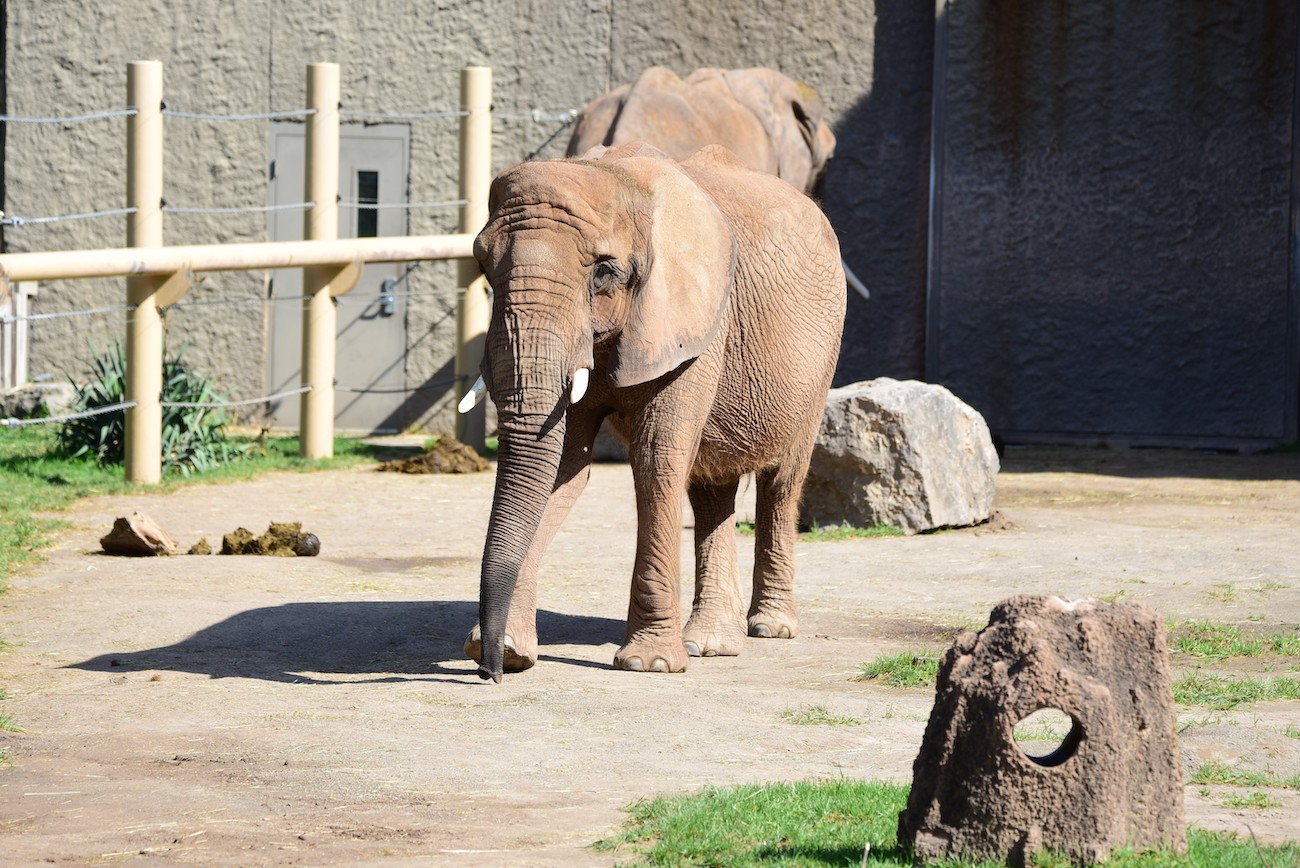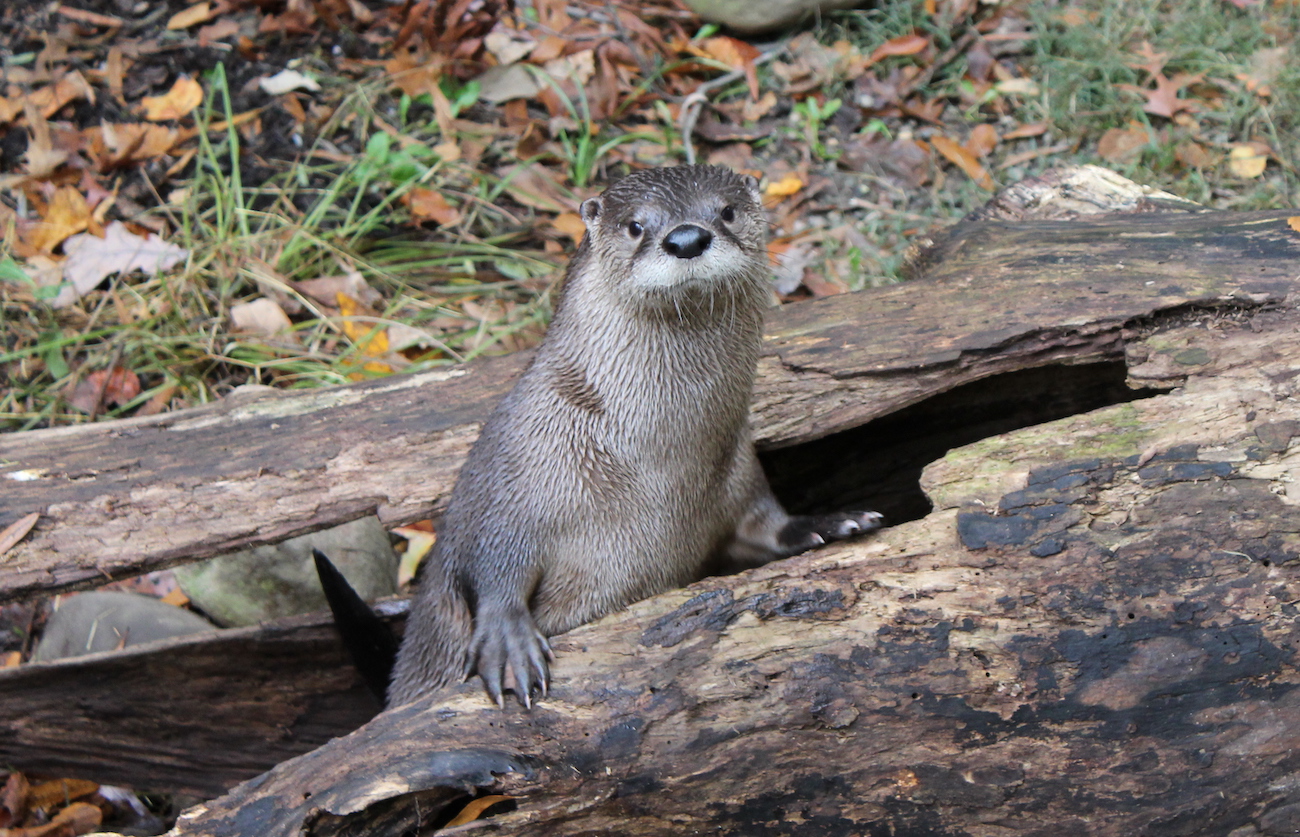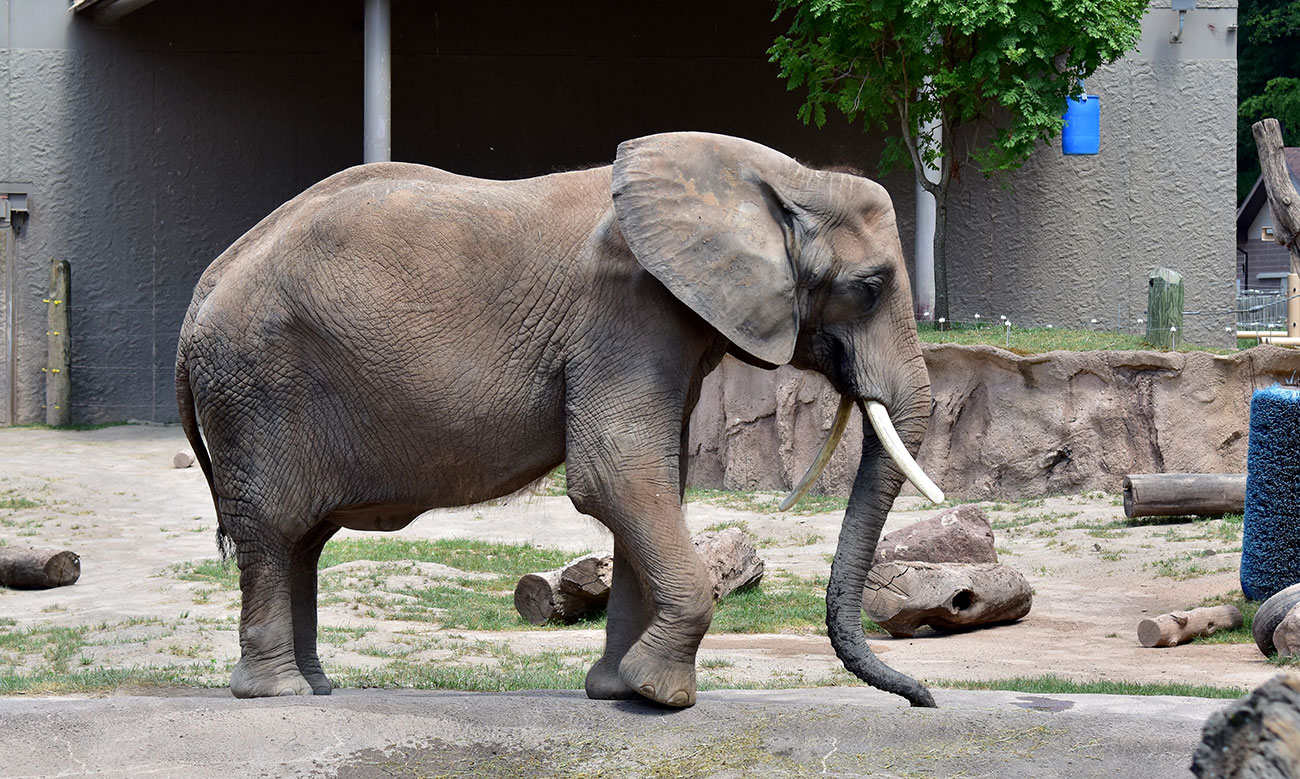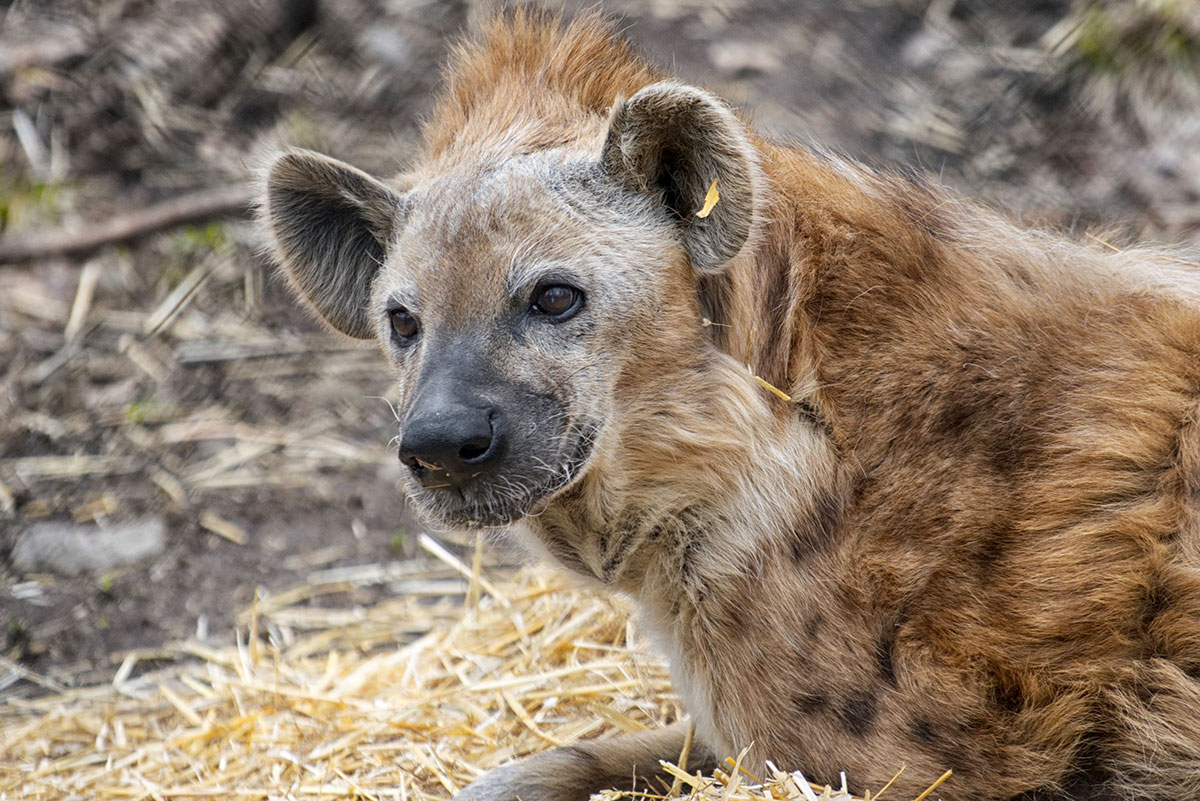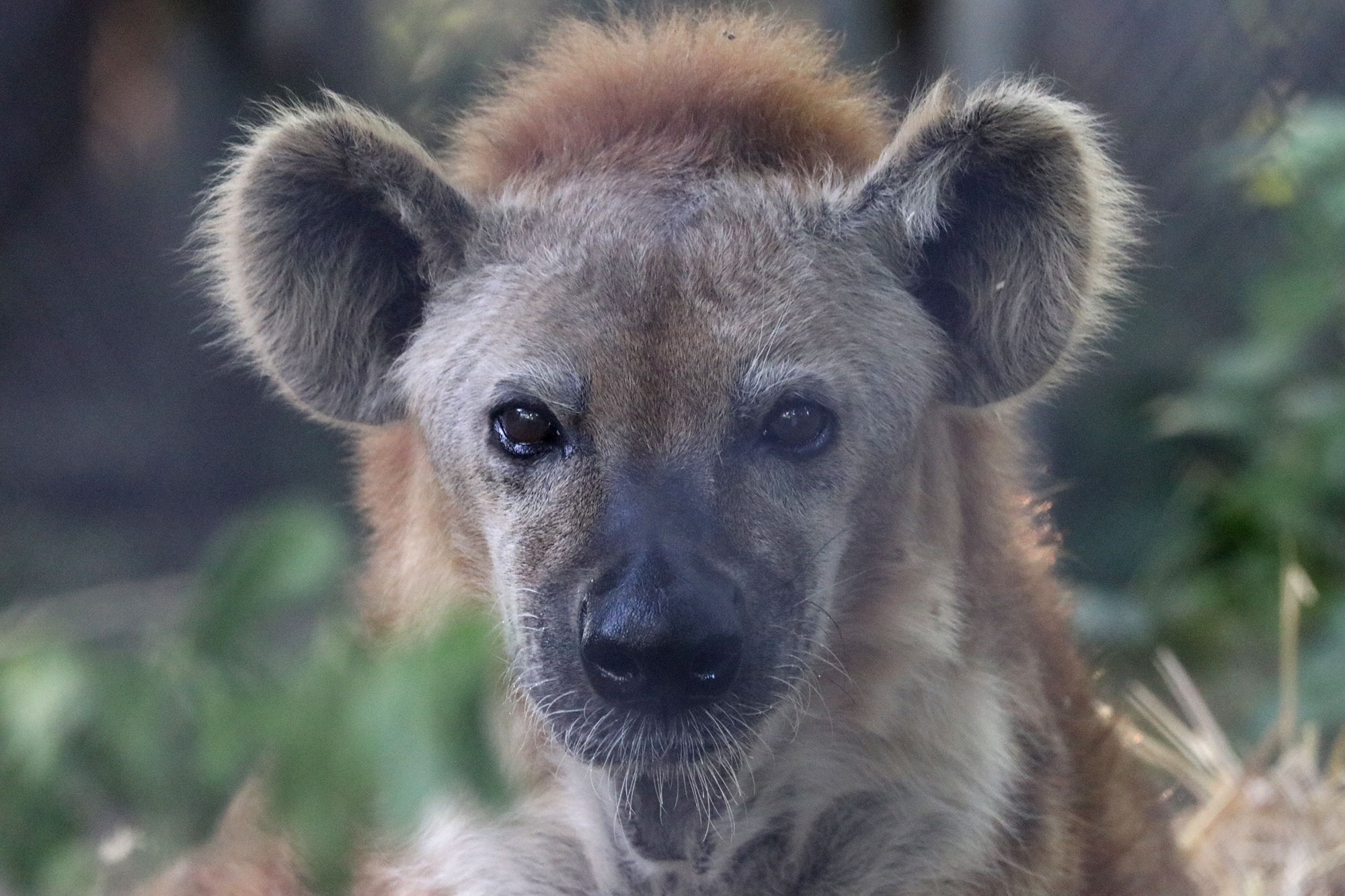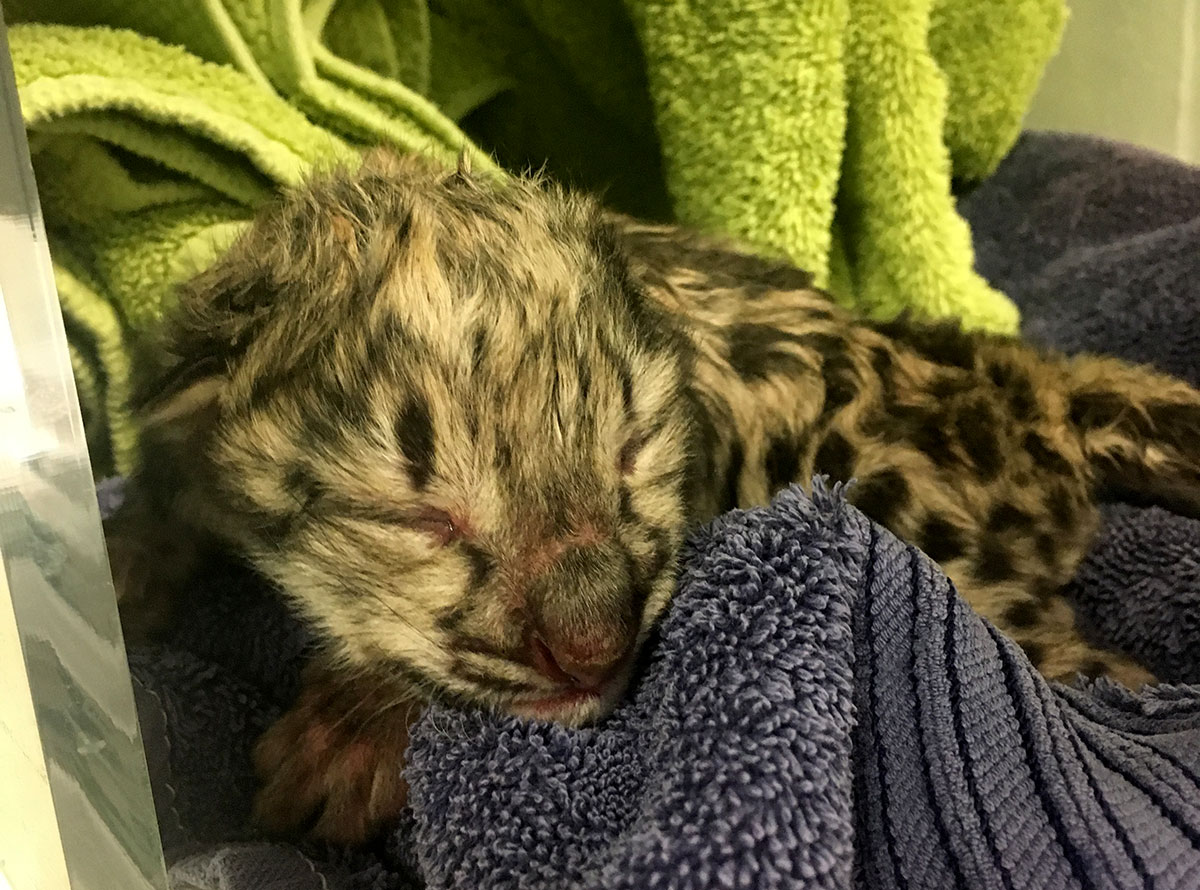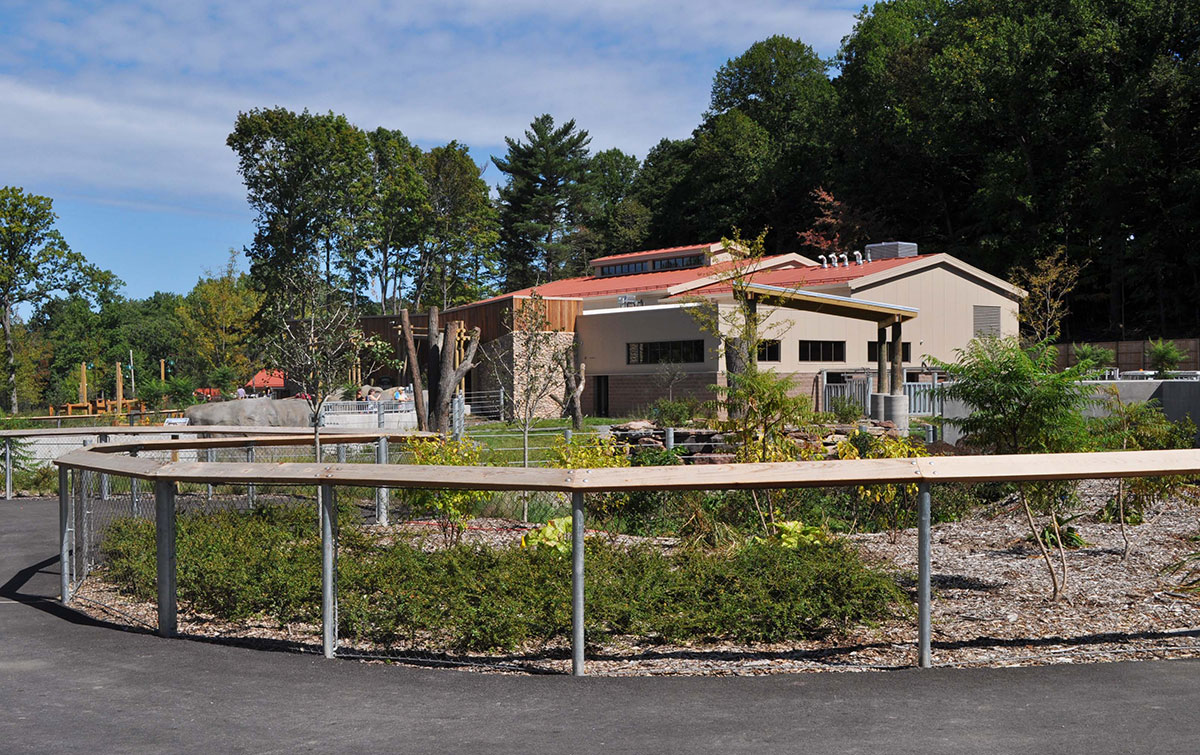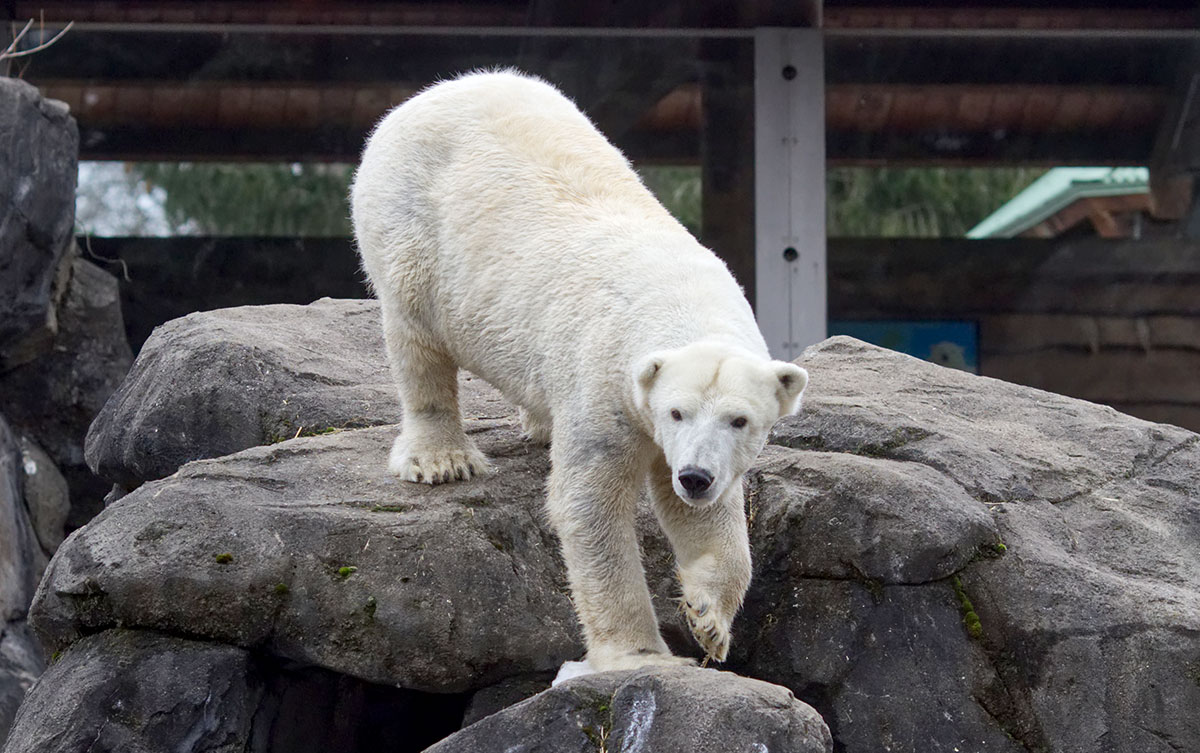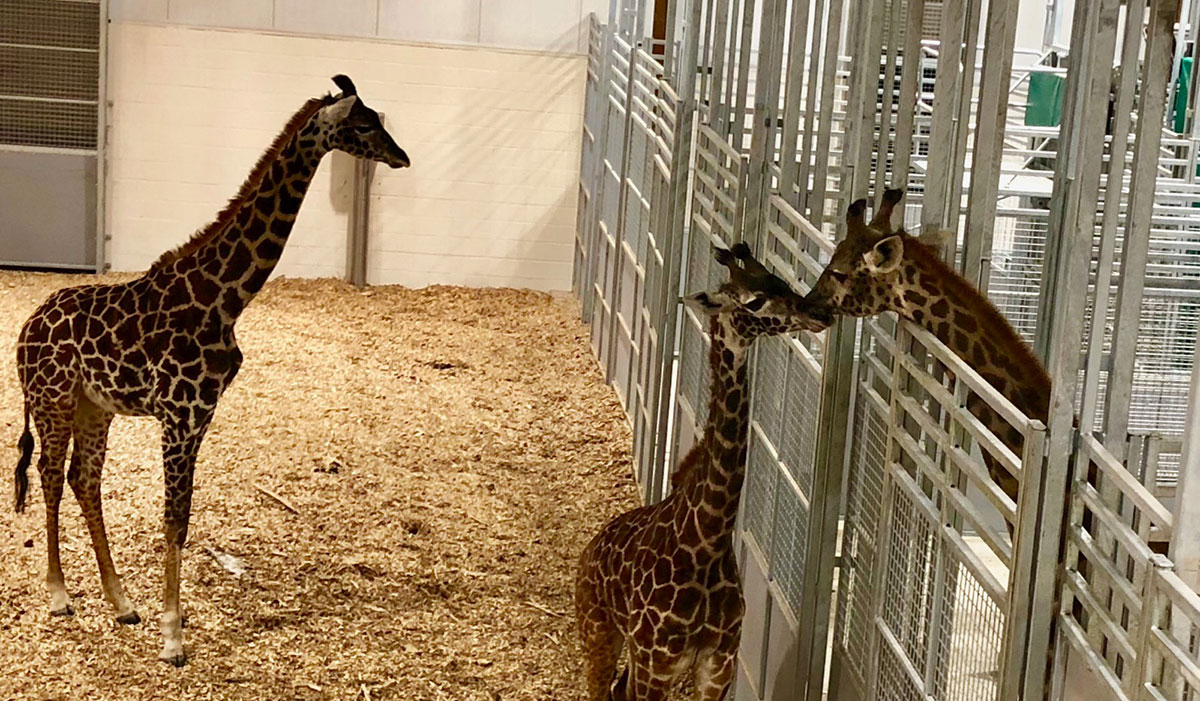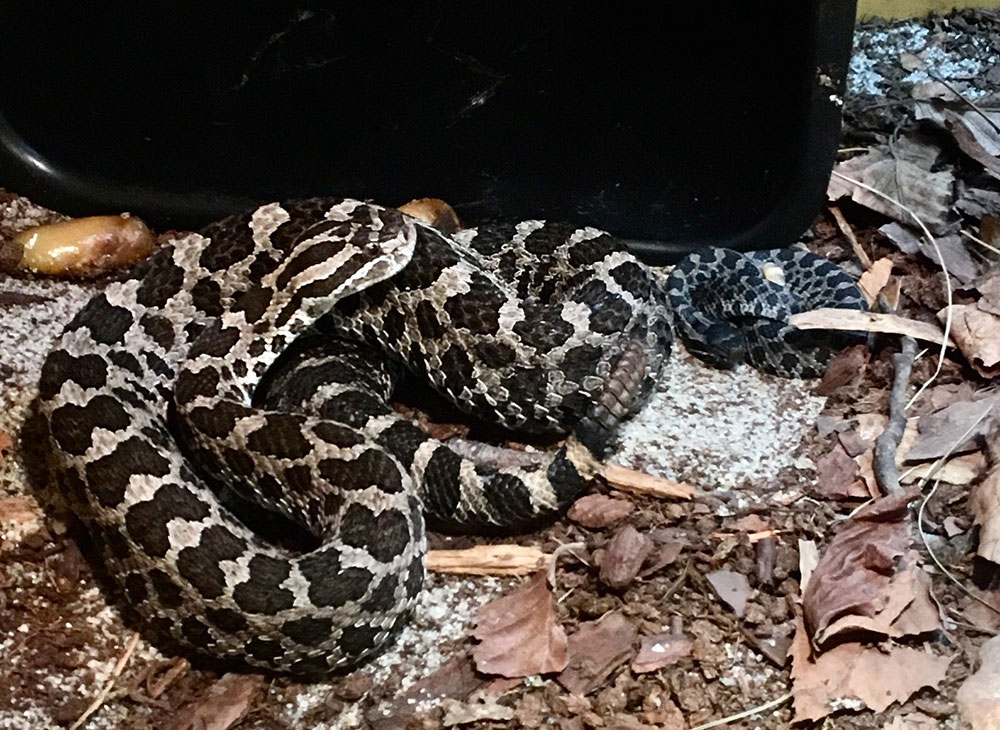April 28, 2020
Spring seems to finally be here at Seneca Park Zoo. Although spring is not the same without all of our wonderful guests. This year it will just be the keepers celebrating one of the Zoo’s most beloved residents, African Elephant Lilac, who will be turning 42 this May. Over the last 40 years, Lilac has served as an ambassador animal for the Seneca Park Zoo, representing her African elephant counterparts in nature.
Elephants are the largest land animal in the world, with the African elephant being slightly larger than the Asian elephant. African elephants weigh from 6,000 pounds for a small female to 14,000 pounds for a large bull, and can grow to be 10 feet tall. African elephants’ median life expectancy is 38 years old. They’re found throughout Africa and are currently listed as Vulnerable on the IUCN Red List of Threatened Species.
Lilac came to Seneca Park Zoo in 1979 as an orphan from Kruger National Park with Genny C (42). Moki (37) joined the herd in 2015. All three elephants, although geriatric, are doing very well. Lilac continues to have a very spunky personality. The staff frequently jokes that she looks and acts much younger than her age.
You can tell Lilac apart from Genny C and Moki by her smaller stature and the hole in her left ear, which was from an injury she arrived at the Zoo with. Her favorite activities range from standing on anything she can find to chasing frisbees, blowing raspberries, and painting. She loves to problem solve and takes great pride in figuring out difficult tasks asked by her keepers. Her favorite treats are watermelons, pumpkins, and cabbages.
Lilac is patiently waiting for visitors to return to the Zoo but in the meantime, she continues to keep her keepers on their toes. We are looking forward to celebrating her birthday with you all in any way we can, this May. Stay tuned for more updates from Seneca Park Zoo!
– Jenna Bovee, Zoologist

